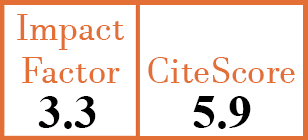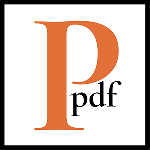Full Papers
Analysis of clinical features and risk factors for patients with idiopathic inflammatory myopathy complicated by Pneumocystis jirovecii pneumonia
J. Li1, W. Huang2, F. Ren3, L. Luo4, D. Chen5, D. Huang6, J. Zhou7, L. Tang8
- Department of Rheumatology and Immunology, The Second Affiliated Hospital of Chongqing Medical University, Chongqing, China.
- Department of Rheumatology and Immunology, The Second Affiliated Hospital of Chongqing Medical University, Chongqing, China.
- Department of Rheumatology and Immunology, The Second Affiliated Hospital of Chongqing Medical University, Chongqing, China.
- Department of Rheumatology and Immunology, The Second Affiliated Hospital of Chongqing Medical University, Chongqing, China.
- Department of Rheumatology and Immunology, The Second Affiliated Hospital of Chongqing Medical University, Chongqing, China.
- Department of Rheumatology and Immunology, The Second Affiliated Hospital of Chongqing Medical University, Chongqing, China.
- Department of Rheumatology and Immunology, The Second Affiliated Hospital of Chongqing Medical University, Chongqing, China.
- Department of Rheumatology and Immunology, The Second Affiliated Hospital of Chongqing Medical University, Chongqing, China. hopetang@hospital.cqmu.edu.cn
CER18602
Full Papers
Free to view
(click on article PDF icon to read the article)
PMID: 40470565 [PubMed]
Received: 06/02/2025
Accepted : 14/04/2025
In Press: 03/06/2025
Abstract
OBJECTIVES:
To analyse the clinical characteristics and risk factors for Pneumocystis jirovecii pneumonia (PJP) in idiopathic inflammatory myopathy patients (IIM).
METHODS:
Retrospective analysis was conducted in 432 patients with idiopathic inflammatory myopathy by evaluation of demographic information, clinical characteristics, and treatment data. Receiver operating characteristic curves were used to evaluate the predictive value of (1-3)-β-DG-glucan for diagnosis of PJP. Multiple logistic regression analysis was used to identify independent risk factors for PJP occurrence.
RESULTS:
Of the enrolled patients, 34 had PJP and were defined as the PJP+IIM group. The other patients that did not have PJP were defined as the PJP-IIM group. By univariate analysis, dermatomyositis, anti-MDA5 antibodies, rash, concomitant respiratory symptoms, decreased absolute lymphocyte count, increased erythrocyte sedimentation rate, increased ferritin levels and concurrent bacterial or viral infections were found to be risk factors for PJP in these patients. Among these, dermatomyositis, rash, decreased absolute lymphocyte count, and concurrent viral infection were the most important independent risk factors for PJP.
CONCLUSIONS:
Dermatomyositis, rash, decreased absolute lymphocyte count, and concurrent viral infection are independent risk factors for the occurrence of PJP in idiopathic inflammatory myopathy patients.


